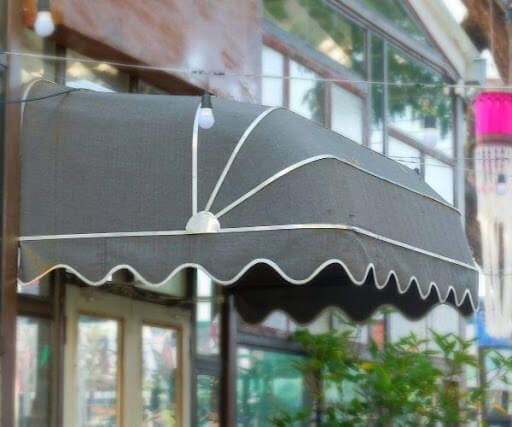
Deciphering fact from fiction when floating the mortgage market isn’t always easy. There are a lot of misconceptions surrounding mortgages, which is why it pays to talk to a financial professional. This is especially important when planning for your first home. Here are some of the common mortgage myths busted.
Photo by Arno Smit on Unsplash
1. The deposit is all I need to save for
A home loan deposit is just one of many purchase costs, albeit the most expensive. There are other costs you need to save for, including:
- Loan establishment fees
- Lenders mortgage insurance (if you borrow more than 80% of the purchase price)
- Stamp duty (although you may be exempt if it’s your first home)
- Solicitor fees
- Conveyancer fees
- Pest and building inspections
- Moving expenses.
So don’t get caught thinking you’re ready to go as soon as you’ve got the money for a deposit. Using a first home buyer guide will help you plan the entire process and have you ready for any unexpected costs.
2. Extra credit doesn’t count
Many borrowers believe that lenders only look at the balance owing on a credit card, but this isn’t true. Lenders look at credit card limit, meaning they’ll base your lending capacity on how much is available to you. With this in mind, get rid of any credit cards you don’t use. The fewer cards you have, the better your borrowing power.
3. The lowest rate equals the best home loan
Having a low-interest rate home loan can help you save money, but it’s not always your best option. There are more factors to consider, so shop around and weigh up the pros and cons of each product. You might like to pay your loan off faster, in which case a loan product with an extra repayment feature will be something to look for. Different rates come with different fees too.
4. Lenders mortgage insurance protects the borrower
As the name suggests, lenders mortgage insurance (LMI) is about protecting the lender against a missed payment by the borrower. The fee usually comes into play when borrowing more than 80% of the purchase price, and the more you borrow the higher the LMI fee. LMI doesn’t protect the borrower.
5. A fixed-rate is better than a variable rate
A fixed-rate provides stability and can save you money if interest rates rise, but flexibility is limited. Exiting during a fixed period can be very costly and you may not be able to make extra repayments, meaning you pay more in interest over the long term. Like myth number 4, weigh up your options and consider what’s best for your goals and needs.
6. Long-term is always better than short-term
The terminology around small loans can often create confusion and reluctance. However, there are often benefits of small loans people are not aware of. More and more interest is added to the balance of your loan the longer you owe money to your lender.
This is the beauty of short term loans. They may have higher interest rates than a long-term loan, but because there’s less time to accrue interest, you can save significantly. Getting a short term loan and paying it off quickly can also give your credit score a boost.
7. Competitive rates are all that matter
The Reserve Bank (RBA) controls home loan rates, therefore a competitive rate isn’t the be-all and end-all. The RBA adjusts the cash rate from time to time, but each lender can change their rates as they see fit.
8. Paying my loan more frequently won’t save me money
The more frequent your repayments, the more money you save long term. For example, a 30-year $350,000 loan on a 4.74 percent interest rate will mean monthly repayments of $1823.66. If you paid half fortnightly ($911.83) you can reduce your loan term to 25 years and six months, saving you over $53,000 in interest. Weekly payments are even better!
9. Self-employed people pay more in interest
While it’s true that self-employed people can pay higher interest rates, this is only the case when you can’t produce your tax returns. As long as you have your financials and tax returns in order, you’ll qualify for the same rates as a regular PAYG employee. It’s a low documentation loan that comes with higher rates, not the fact you’re self-employed.
10. You won’t have any financial help
It’s likely you’ve heard of people getting help from their parents or family when it comes to saving for a deposit or paying off a mortgage and thinking, “why not me?”
Well, it turns out that most older generations are pretty generous when it comes to helping children and grandchildren. This inheritance survey, outlines that 8 of 10 Australian seniors are likely to leave money for their children.
10. The big banks are the best
Many people fear that loans from a non-major bank are higher risk than those from one of the big banks. They think the biggest banks are the safest bets, but this sort of thinking can cost you a great deal of money. Sometimes it’s the non-majors that will tick your boxes, so spread your shopping net widely.
11. Refinancing is expensive and not worth the effort
Many people think that refinancing a mortgage for improvement of half a percent isn’t worth it. But let’s say you have a 30-year $350,000 loan with an interest rate of 5.24 percent.
If you refinance to a rate of 4.74 percent, you would save yourself $107 a month and $38,480 over the life of the loan. That sounds worth it, right? Besides, in 2011 exit fees were banned in Australia meaning you no longer get hit with hefty exit penalties.
12. Homeowners need to use their own cash to renovate
So, you’re no longer a renter paying exorbitant rent prices in big cities in the U.S. like Pittsburgh or London in the U.K., or anywhere else in the world. You already have a mortgage, but you want to renovate? Many homeowners believe that they need a separate loan or cash to undertake renovations on their home, but this is just another myth…
The truth is, most banks will allow you to revalue your home based on proposed renovations and use the equity to top up your existing mortgage.
The best place to start is with a budget and using a free renovation calculator like this one will help you understand the costs involved before approaching your bank.




 POSTED BY
POSTED BY 

